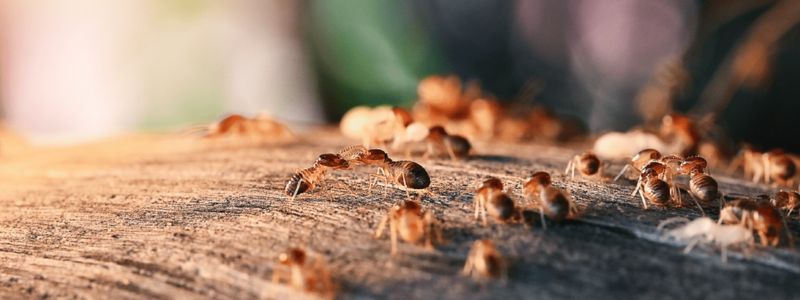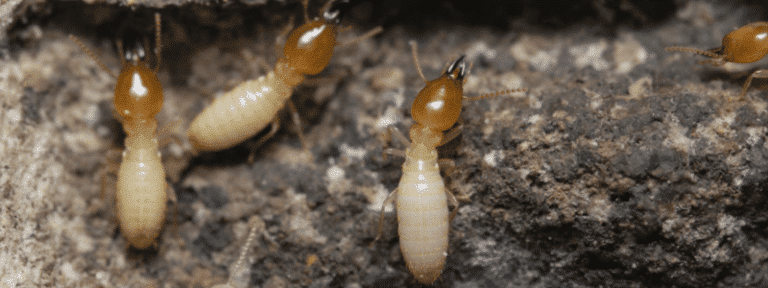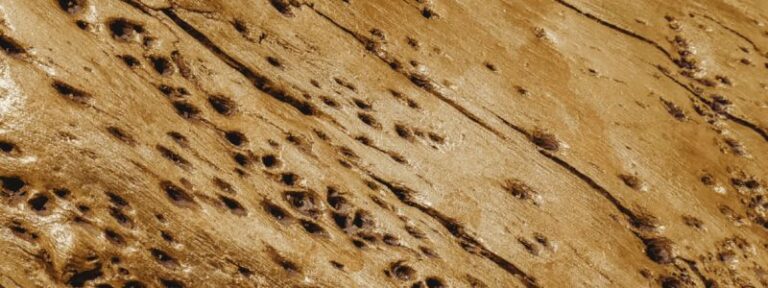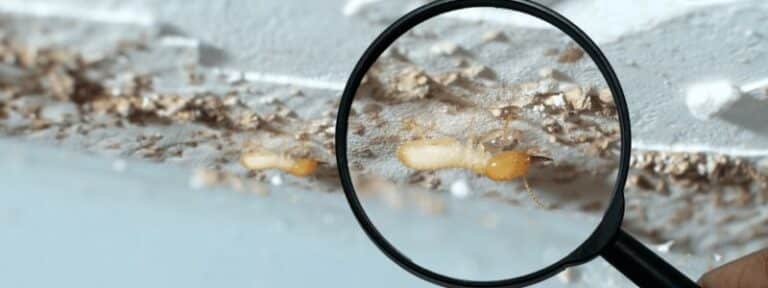Many people don’t know what termites look like – but identification is critical to getting a proper diagnosis for termite control and prevention. We’ll detail how to identify these bugs below so you can win your war against termites in your home.
In this blog, we’ll be looking at the following:
- How to identify termites
- The signs of termites in your home
- How to prevent and treat termites in your home
How to Identify Termites
If you see a bug and want to identify whether or not it’s a termite, look for the following characteristics:
- Adult termites’ bodies usually measure between ¼ to ½ inch long.
- Termites have three different castes, separating them into workers, soldiers, and Alates (also known as ‘flying termites’). The coloring of termites will range from lighter to darker, going from the worker termites to soldier termites to Alates. Similarly, their size will progress in the same order.
- Termites typically have soft bodies with hard heads and powerful jaws. This way, they can eat through entire wood beams in one fell swoop.
- Termites have thick middle abdomens, straight antennae, and shorter legs. This often causes them to be mistaken for large ants – until they begin infesting your walls and other structures.
Though termites will regionally vary in size, shape, and color, they generally fit the descriptions above. Knowing how to identify termites and their signs of infestation, you can work to prevent further damage.
What Are Signs of Termites in Your Home?
The number one sign of termites in your home can be found in this guide, but it’s seeing them (very profound, we know). We’ve taught you what they look like, but it’s also beneficial to know the signs of termites in your home so that you can stop an infestation quickly or before it even starts:
1. Flying Termites: Flying termites – the Alates we mentioned earlier – will be the first to emerge from the nest in your home. They are looking for mates and are attracted to light sources, so you might see them or their discarded wings before seeing other signs of termites.
2. Mud Tubes: Mud tubes are the most common symptom of termites on your floors, walls, or under your home. They often hang from ceilings like stalactites – a departure from most home decor.
Mud tubes allow termites to travel between their nest and a food source, providing protection for their colony. These are very distinct looking and cause alarm if you see one.
3. Termite Droppings: Also known as frass, these small wood-colored pellets are often confused with sawdust. They will accumulate around the openings to termite nests, so if it appears as though there is sawdust in a place that does not make sense to have it, be on the lookout.
4. Hollowed or Blistered Wood: Termites cause damage to wood structures as they feed on them. If the wood in your home is blistering or sounds hollow (when previously it has not), it can be a sign of termite activity. Termites typically work inside to outside when eating a section of wood, which can lead to cracks, breaks, and collapses in the structure of your home. Additionally, they cause structural damage to floorboards and baseboards, so look for blistering and sagging as a sign of termites chewing on them.
Any of these signs is enough for you to investigate further and contact pest control. If you see a number of these indicators of a termite infestation, contact your local pest control services immediately.
How to Prevent and Treat Termites in Your Home
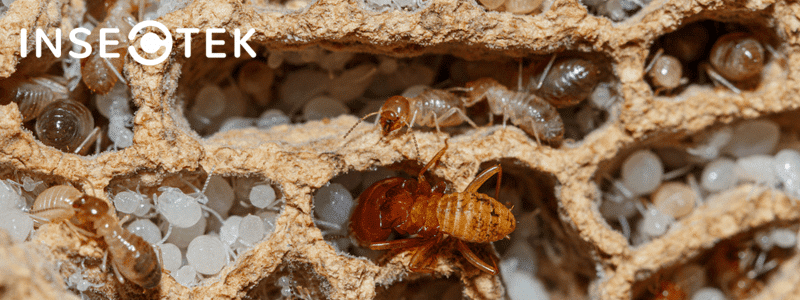
Simple home prevention methods for termites are best if they’re not already present. (Once you notice signs of infestation, it’s time to seek professional help.)
However, there are some regular best practices you can implement to keep termites at bay.
- Reducing open food and water sources in or around your home
- Sealing gaps under your doors and around your windows
- Stacking firewood or lumber away from your home
- Clearing mulch and other organic compounds away from the foundation
- Properly sealing cracks in your foundation or walls
One of the best ways to ensure you aren’t letting termites slowly invade your home is to have a regular inspection from a professional pest control service. On top of their expertise in termite identification, they can also use proper preventative measures to ward off pests before they can move in.
Published On: September 3, 2021
Updated On: April 4, 2023



